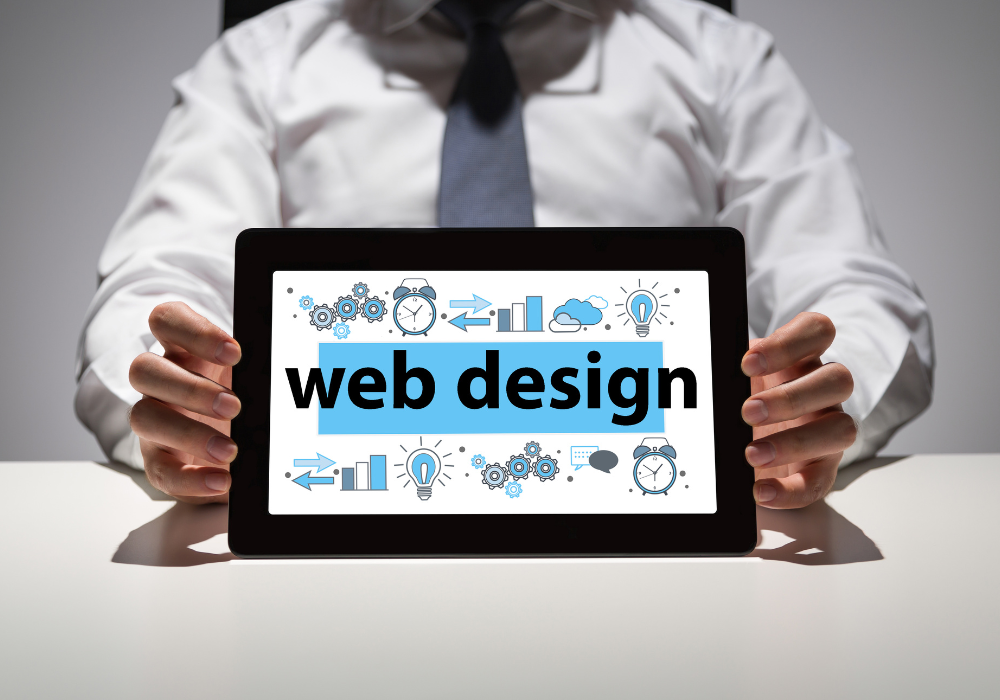The Evolution of Website Design Trends: How To Keep Your Site Fresh

In today’s digital era, a well-designed website is crucial for small businesses. It’s often the first impression potential customers have of your brand, and we all know how lasting first impressions can be. But what makes a website good? How has the answer to that question changed over the years? This blog post will take you on a journey through the evolution of website design trends, offering valuable insights and practical tips to help your small business stay current and competitive. You’ll learn about the latest design trends, how they impact user experience, and what the future holds for web design.
Evolution of Website Design Trends
 The Early Days of Web Design
The Early Days of Web Design
Website design has come a long way since the 1990s when the internet was still in its infancy. Back then, websites were basic and text-heavy, with simple layouts and limited interactivity. No flashy graphics, no scrolling animations—just plain HTML pages with hyperlinks.
The Rise of Visual Design
In the late ’90s and early 2000s, web designers began to experiment with visual elements. The introduction of CSS (Cascading Style Sheets) allowed for more creative layouts and designs, enabling designers to separate content from presentation. This period saw the rise of colourful backgrounds, animated GIFs, and Flash-based websites, which, though innovative, often compromised usability.
User-Centric Design
The mid-2000s marked a shift towards user-centric design. Designers started prioritizing user experience (UX), focusing on creating intuitive and accessible websites. This era brought about the use of grid systems, responsive design, and mobile-first approaches, making websites more user-friendly and adaptable to different devices.
The Impact of Design on User Experience and Engagement
Enhancing User Experience
A well-designed website significantly enhances user experience. When users can easily navigate your site and find what they’re looking for, they’re more likely to stay longer and engage with your content. For small businesses, this means higher chances of converting visitors into customers.
Engaging Visitors
Different design trends can affect user engagement in various ways. For instance, minimalistic designs with ample white space can make your content stand out and reduce cognitive load on users. On the other hand, interactive elements like animations and parallax scrolling can captivate users and keep them engaged.
Current Trends in Website Design
Minimalism and White Space
Minimalism continues to dominate web design, emphasizing clean layouts, simple colour schemes, and ample white space. This trend helps draw attention to essential elements and improves readability.
Dark Mode
Dark mode is becoming increasingly popular, offering an alternative colour scheme that’s easier on the eyes, especially in low-light environments. It also adds a modern, sleek look to websites.
Micro-Interactions
Micro-interactions are subtle animations that provide feedback to users, such as a button changing colour when hovered over or a form field shaking when filled out incorrectly. These small details enhance user experience and make websites more engaging.
Practical Adoption Tips
To stay competitive, small businesses should consider adopting these trends. For example, if your website is cluttered, simplifying the design and adding white space can improve user experience. Implementing dark mode options can cater to user preferences, while adding micro-interactions can make your site more interactive and engaging.
Future Predictions for Website Design
 Artificial Intelligence (AI) and Machine Learning
Artificial Intelligence (AI) and Machine Learning
AI and machine learning are set to revolutionize web design. AI-powered tools can analyze user behaviour and customize website content accordingly, providing personalized experiences for each visitor.
Voice User Interface (VUI)
With the rise of voice-activated devices like Amazon’s Alexa and Google Home, voice user interfaces are becoming more relevant. Integrating VUI into websites can enhance accessibility and offer a hands-free browsing experience.
Augmented Reality (AR) and Virtual Reality (VR)
AR and VR technologies are gradually making their way into web design, offering immersive experiences. For instance, e-commerce websites can use AR to allow customers to visualize products in their real-world environment before making a purchase.
Future-Proofing Your Website
To future-proof your website, consider these emerging technologies and how they can benefit your business. Stay informed about the latest advancements and be open to experimenting with new design concepts.
Tips for Implementing Design Changes
Start with User Research
Before making any design changes, conduct user research to understand your audience’s preferences and pain points. This will help you make informed decisions and create a website that meets their needs.
Test and Iterate
Implement design changes gradually and test their impact on user experience and engagement. Use A/B testing to compare different design elements and iterate based on the results.
Budget-Friendly Solutions
Small businesses often have limited budgets, but you don’t need to break the bank to implement effective design changes. There are plenty of affordable tools and resources available, such as website builders like Wix and Squarespace, which offer customizable templates and drag-and-drop functionality.
Measuring Success
Track key performance indicators (KPIs) to measure the success of your design changes. Metrics such as bounce rate, average session duration, and conversion rate can provide valuable insights into the effectiveness of your website design.
In conclusion, staying current with website design trends is crucial for small businesses looking to attract and retain customers. By understanding the evolution of web design, adopting the latest trends, and preparing for future advancements, you can create a website that stands out and delivers exceptional user experiences. Don’t hesitate to take action on the insights provided and elevate your online presence. For more personalized guidance, consider booking a consultation with a web design expert to help you implement these changes effectively.